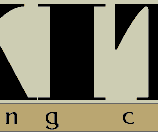Conclusion
The highest goal of breeding Akitainu is to produce the perfect male specimen possible as I have previously explained.
What does the perfect male specimen look like? Is it one that is precisely shaped and formed as the Akiho Standard dictates, or is it one that satisfies the breeders the best and produces a nice line of offspring? I’d like to think that each breeder has his own ideas of what this perfect male specimen looks like. In my mind, I feel that the perfect male specimen should not only have height, but also weight (height 26 2/5 in or 2 shaku 2 sun and weight 85-90 Ibs). If you looked at this dog in silhouette, clippedits ears and tail, you should still be able to distinguish that it is a male Akitainu and NOT a German Sheppard. Husky or any other breed.
Along with this idea of height and weight, this perfect male specimen should have two additional and very important characteristics. They include a good temperament and a good coat. In regard to the coat, it must have a long coarse guard coat that is standing perpendicular to its body. All other details included in the Akiho Standard are just minor details as far as I am concerned. I'd like to breed and own a male Akitainu that has all these characteristics that I feel are important in a dog for both pride and enjoyment, and to be able to call this dog my vision of the ultimate male.
DEVELOPING PROBLEMS
Nowadays I am beginning to see more and more similar problems in the dogs that enter shows. First off, I've seen male dogs that are 2 shaku 5 bu (24.6 in) and female dogs that are 1 shaku 8 sun 5 bu (22.2 in). I feel that when an Akitainu becomes this small, it looses the characteristic of this large and stately-looking breed. According to the dogs that I have seen recently, the male is at a size where the female should be and the female is about the size of a middle-sized dog.
Second, some dogs have an incredibly weak temperament. For instance, I see dogs in the Seiken Division (Adult or 2 1/2 years and older) shaking and barely standing in the ring. There are others that are so weak and timid that they can't even become a watch dog. These types of dogs are the least favorable according to my own standards.
Another observation I have made has to do with the recent judges. They mostly look for good colored dogs and give the Tokuyu Award to these dogs rather than looking at the temperament, size, and accurate body structure which I consider more important than coloring. Relating this to humans, its like a person entering a show and only winning because his/her outfit is prettier than everyone else's.









